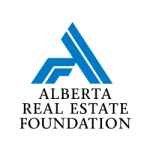The condominium plan is one of the most important documents to review before you buy a condominium unit. It includes key pieces of information such as:
- the size of the unit and what the unit includes
- what is common property and
- what you may have exclusive use over
The Land Titles Office registers condominium plans. A condominium cannot legally exist without a registered condominium plan. The Land Titles Office will assign a condominium plan number once it registers the condominium plan. This number becomes part of the condominium corporation’s name.
Before You Buy: What to look for in the condominium plan
In Alberta, the Condominium Property Act requires all condominium plans to include specific information that will help you decide whether the condominium development is right for you.
Unit Size and Boundaries
The condominium plan must include a drawing showing all of the condominium’s individual units. This must also include numbers or other symbols identifying each unit. The plan must also show:
- the boundaries of each unit;
- the approximate area of each unit (for both conventional and bare land units); and
- the boundaries of any common property that owners may have exclusive possession over (i.e. balconies).
This information will enable you to identify whether the unit is conventional or bare land. It also shows what your purchase of the unit includes (i.e. doors, windows, front yard).
Unit Factor (used to determine condo fees)
The plan will include a schedule identifying the unit factor for each unit and how to determine it.
Condominium contributions (or condo fees) are based on the assigned unit factor so it is important to understand how unit factors have been divided among units. If the unit factors are equal across units, it means that you will be paying the same in contributions as someone with a larger or smaller unit. If the unit factors are proportional to the size of the unit, contributions will increase with the size of the unit.
Property Boundaries
The condominium plan will include a description of the land boundaries of the whole condominium development, the location of any buildings, and the location of roads and utilities on the development.
If you’re considering a development under construction, assess where the buildings will be located especially in relation to other nearby buildings. Will neighbouring buildings obstruct your view? Is there a lot of construction in the area?
Additional requirements
The Condominium Property Act also requires condominium plans to include the following information:
- Details to identify the title to the development’s parcel of land.
- If it is multi-stage development, a phased development disclosure statement may be required. This statement is not required if the development is proceeding under a barely blended model – see Buying New: Multi-Stage Developments for more information.
- Signature of the developer.
- Condominium corporation’s address for service of documents.
Documents to file with the plan
Certificate of a land surveyor –boundaries & easements
This certificate confirms the condominium’s land boundaries as per the Surveys Act. It will also identify whether there are neighbouring properties infringing on the boundaries of the condominium or whether the condominium is infringing on neighbouring properties. If any infringements exist, the certificate must confirm the granting of appropriate easements.
Certificate of an architect, engineer, or land surveyor –units & post tension cables
This certificate confirms that the units shown in the condominium plan are the same as the ones existing on the property. It will also identify where there are any post-tension cables located on or within the building or property.
Certificate of the municipal authority –approval of proposed division & parking spaces
This certificate states that municipal authority approved the proposed division of the building and parking spaces. It confirms the number of parking spaces for visitors and persons with disabilities in the plan (if any) and their location on common property or a unit labelled for parking.
Condominium Additional Plan Sheets (CAD)
The Condominium Property Regulation allows additional sheets to be added to a condominium plan so that changes to bylaws, board members, restrictions, and legal / financial burdens can be easily tracked. If changes are unregistered, they may not be legally enforceable in court.
The following information can also be on condominium additional plan sheets (CAD):
- Condominium Board: names and addresses of members, changes in board membership, address of condominium corporation.
- Bylaws: any changes or additions.
- Common property: any transfer or lease, any exclusive possession lease agreements.
- Restrictions on common property: easements (agreement allowing another party to access a landowner’s property), utility right of way, or restrictive covenants burdening or benefitting the common property.
- Legal or financial burdens on common property: builders’ liens, writs of enforcement, caveats.
- Amendments regarding doors and windows: corporations registered before September 1, 2000 were able to amend the condominium plan so that windows and doors became part of the units rather than part of the common property.
It is important to note that information impacting a single unit instead of the corporation as a whole can be found on the certificate of title for the unit as opposed to the CAD.

Thank you to the Alberta Real Estate Association for allowing portions of their Condominium A to Z course manual to be adapted for use in this section.
Last updated: June 2022


